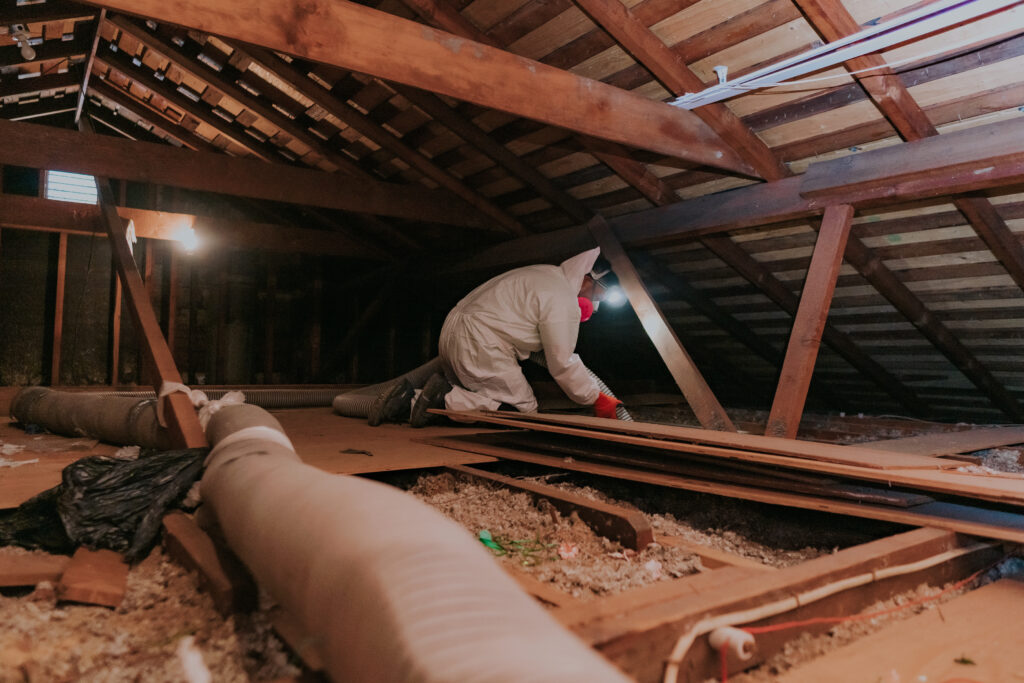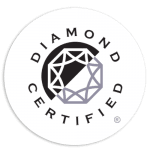Attic Insulation Removal Cost for a Home Renovation
Do you feel like your home isn’t as energy efficient as it could be? It might be time to take a closer look at the insulation in your attic. Insulation is crucial for maintaining comfortable temperatures in your home and reducing heating and cooling costs.
In this article, we’ll discuss attic insulation, different types of insulation materials, and the process of attic insulation removal and replacement. We’ll also explore factors that affect insulation cost, such as the size of your attic and the type of insulation material you choose.
Types of Insulation Materials
There are several different types of insulation materials you may find in your attic. Some of the most common types include:
Fiberglass insulation: This popular insulation material is available in batt and blown-in forms. The batts are pre-cut and easy to install, which is why it’s one of the most favored insulation types.
Cellulose insulation: Made from recycled paper products, cellulose is an eco-friendly choice. It’s typically blown-in, providing excellent coverage, and is great at sealing gaps in your attic. The fact that it’s created from millions of small particles makes it one of the most challenging types of insulation to remove.
Spray foam insulation: This insulation type is applied as a liquid and expands to fill gaps, creating an effective barrier against air leaks. It’s more expensive than other types, so it’s not as common, but is also one of the most difficult types of insulation to remove.
Wool insulation: A natural and renewable resource, wool insulation is both environmentally friendly and highly effective at insulating your home.
Vermiculite insulation: This insulation material is made from minerals and has been used for decades. However, if yours is an older home, there is some risk that the vermiculite may contain asbestos. Always get it tested before you disturb it.
How Long Does Attic Insulation Last
The lifespan of your attic’s insulation will depend a lot on what was used. Here’s a quick rundown of the different types of insulation and their expected lifespan.
Fiberglass insulation is a popular choice for its affordability and effectiveness. It can last anywhere between 20 to 30 years, depending on the quality of the material and installation, as well as environmental factors. However, it can lose its effectiveness sooner if exposed to moisture or pests.
Made from recycled paper products, cellulose loose-fill insulation is an eco-friendly option. It has a similar lifespan to fiberglass, typically lasting 20 to 30 years. However, it can degrade more quickly if exposed to moisture, as it is more susceptible to mold and mildew.
Spray foam insulation, either open-cell or closed-cell, is known for its superior insulating properties and longevity. With proper installation and maintenance, spray foam insulation can last upwards of 50 years or more. The material’s durability is due in part to its moisture-resistant properties and ability to adhere to surfaces tightly.
Also known as rock wool or slag wool, mineral wool insulation is made from inorganic materials and is highly resistant to fire, moisture, and pests. Mineral wool insulation has a long lifespan, often exceeding 30 years, with some products even lasting up to 50 years.
Apart from the material, there are a few other factors that can affect how long insulation will last, including:
Installation quality: Proper installation is crucial to ensure the insulation’s effectiveness and longevity. Poor installation can lead to gaps, uneven coverage, and reduced insulation performance.
Moisture and water damage: Moisture can degrade insulation materials, reducing their effectiveness and lifespan. Proper ventilation and moisture control are essential to maintaining insulation quality.
Pests: Pests like rodents and insects can damage insulation, leading to reduced effectiveness and the need for replacement.
Environmental factors: Fluctuating temperatures, humidity levels, and other environmental factors can also impact the lifespan of insulation. Regular inspections and maintenance can help identify and address issues before they become significant problems.
How Do You Know if You Need Insulation Removal
There are several reasons why homeowners may need an insulation removal service. Understanding these reasons can help you determine if removal is necessary for your specific situation.
Moisture Problems
Water leaks: Roof leaks, plumbing issues, or condensation can cause moisture to accumulate in the attic, leading to insulation damage. Wet insulation loses its effectiveness and can harbor mold and mildew, which can pose health risks.
Ventilation issues: Inadequate attic ventilation can result in moisture buildup, leading to insulation damage and a potential decrease in its R-value. Proper ventilation helps regulate temperature and moisture levels, protecting the insulation and preventing damage.
Energy Efficiency Upgrades
Insulation improvements: If your attic insulation is old or inadequate, you may choose to remove and replace it to improve your home’s energy efficiency. Upgrading to higher R-value insulation materials can help reduce heat transfer, leading to lower energy bills and a more comfortable living environment.
Air sealing: Insulation removal may be necessary when air sealing your attic to prevent drafts and improve energy efficiency. Removing insulation can provide access to gaps and cracks that need to be sealed, ensuring a more effective air barrier.
Home Renovations
Remodeling: If you’re planning a significant renovation that involves your attic, such as converting it into a living space or adding dormers, you may need to remove existing insulation. This allows for structural changes, electrical work, or installation of new insulation that meets current building code requirements.
Asbestos remediation: In older homes, insulation materials like vermiculite may contain asbestos, which poses health risks. If you’re renovating an older home, you may need to remove and properly dispose of this hazardous material before proceeding with any other work.
Cost Factors and Estimates
The cost of attic insulation removal and installation depends on several factors, including the size of your attic, the type of insulation material, and the extent of any damage or contamination. Here are some key points to consider when estimating the cost:
Size of your attic: The larger the attic, the more insulation you will have to remove and dispose of, which adds to the cost. Insulation coverage is typically measured per square foot, so make sure to measure your attic accurately to get a realistic estimate.
Type of insulation: Certain types of insulation are easier to remove than others. For example, batt insulation usually requires manual removal, which may cost more than removing blown-in insulation, which can be vacuumed out by a professional. Batt insulation, blown-in insulation, spray foam insulation, radiant insulation, and rigid insulation are among the most typical forms of insulation.
Cost to remove insulation with asbestos: Removing insulation that contains asbestos can cost anywhere from $800 to $15,000. Vermiculite insulation may contain asbestos, so we always recommend consulting with an inspector to assess whether insulation removal is necessary. Encapsulation of asbestos is often a cost-effective alternative to removal since asbestos is hazardous only when it becomes airborne.
Additional costs: Attic cleaning costs, junk removal, and any necessary repairs to the attic space can also affect the overall cost of attic insulation removal and installation.
Due to the number of variables that can change what it costs to remove insulation, it’s impossible to quote an accurate figure that will apply to all attics. In general, expect to pay anywhere between $600 to $1500, with an average cost of $900.
As mentioned, if your attic contains asbestos, the removal cost could be much more. Be sure to call insulation specialists for an accurate appraisal.
Attic Insulation Removal Near You
It’s essential to get a cost estimate from insulation professionals to understand the price range for attic insulation removal and installation in your specific situation.
Attic insulation plays a vital role in maintaining a comfortable and energy-efficient home. Over time, old or damaged insulation may need removal and replacement to continue providing effective thermal protection.
You should understand the different types of insulation materials available and the factors that affect the overall cost, such as the size of your attic and the type of insulation.
By consulting with insulation removal professionals near you and obtaining accurate cost estimates, you can make an informed decision on the best insulation solution for your home. Book a free appraisal or call the Attic Pros to learn more about your options.

